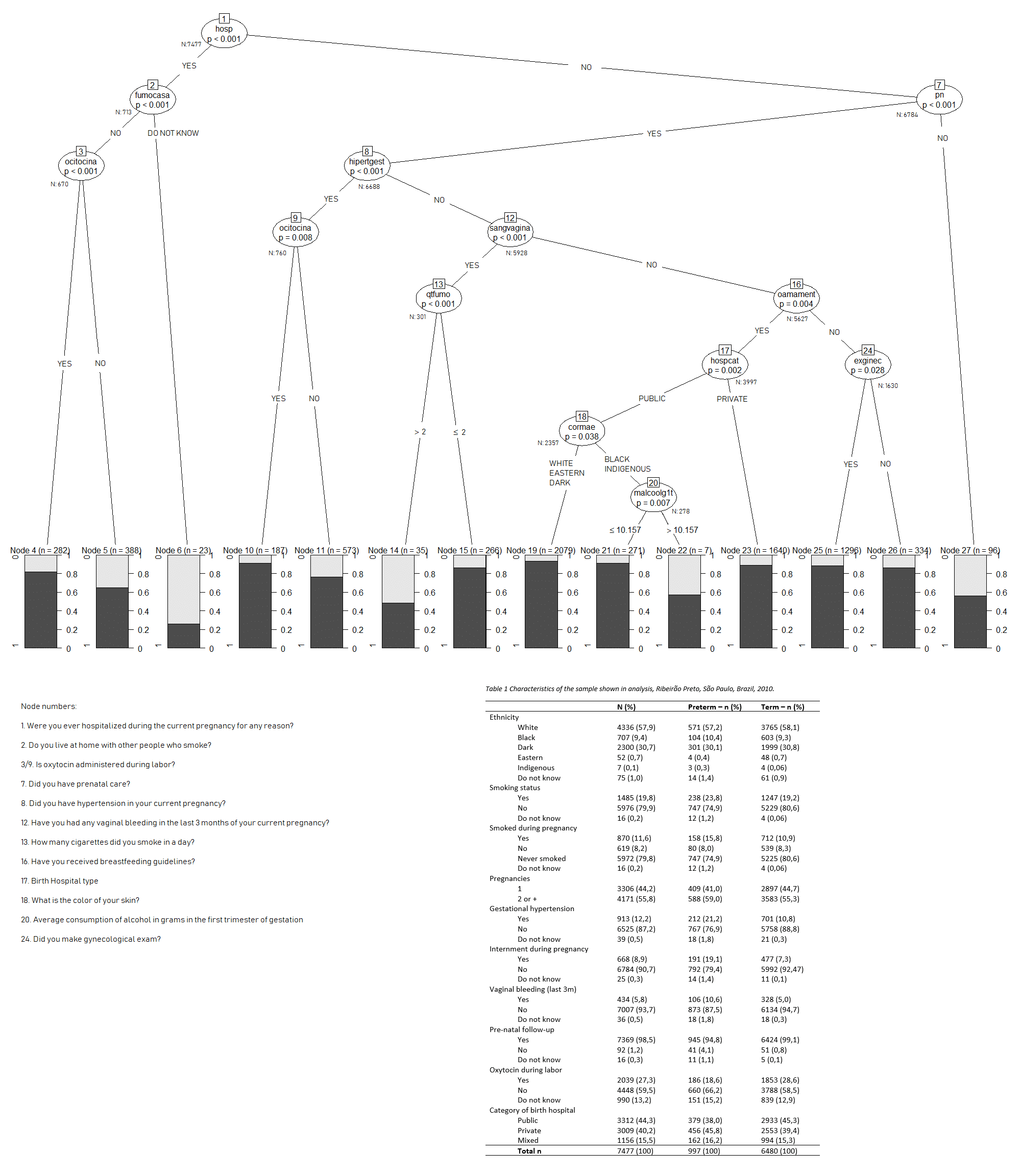
Pathways to Prematurity in a Brazilian Birth Cohort: Conditions Classified by Decision Trees
2Department of Computing and Mathematics, Faculty of Philosophy, Sciences and Letters of Ribeirão Preto, University of São Paulo, Brazil
3Department of Pediatrics, Faculty of Medicine, University of São Paulo, Brazil
Background: Preterm birth is the second direct cause of child deaths in children younger than 5 years. The survivals can present physical, neurological or educational disability throughout life, causing great financial and emotional cost to families and society.
Objective: To computationally identify conditions that influence prematurity during pregnancy in a Brazilian birth cohort.
Methods: This is a cross-sectional study based on BRISA cohort, which collected information about all births in 8 hospitals in Ribeirão Preto, Brazil in 2010. Questionnaires about the mother and the newborn were administered. In this analysis only maternal information previous to birth were considerate. We used sociodemographic characteristics, lifestyle, characteristics of gestation and prenatal follow-up. Mothers of twins and stillborn were excluded due to triviality. Conditional inference trees (CIT), a Machine Learning technique which recursively splits data in binary groups as trees, were used to infer rules that predict premature outcome.
Results: 7699 pregnant women participated and 7477 met all criteria. The mean age was 27 years (SD=6.25), 44.22% were primiparous. The total prematurity rate was 13.33%. According to CIT analysis, pregnant women hospitalized at some point during pregnancy had the highest probability of preterm births (5-folds cross-validation error rate of E=13.174, sensibility S=0.44, specificity SP=0.87). Who were not hospitalized during gestation and did not have prenatal care had also a high prevalence of preterm infants. Prematurity was also high in mothers who smoked more than 2 cigarettes per day and presented bleeding in the last 3 months of gestation, even if they were under prenatal care.
Conclusion: Factors such as hospitalization during pregnancy, hypertension, bleeding, smoking, type of hospital, prenatal care, and ethnicity were determinants. Efforts in public health policies that intensify the prenatal care are essential to reduce the prevalence of preterm infants.

Powered by Eventact EMS